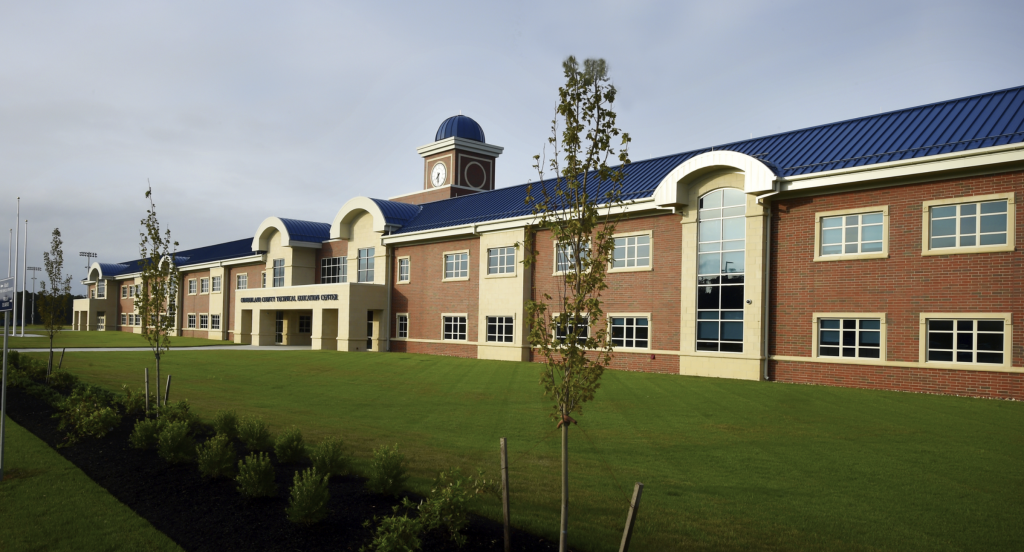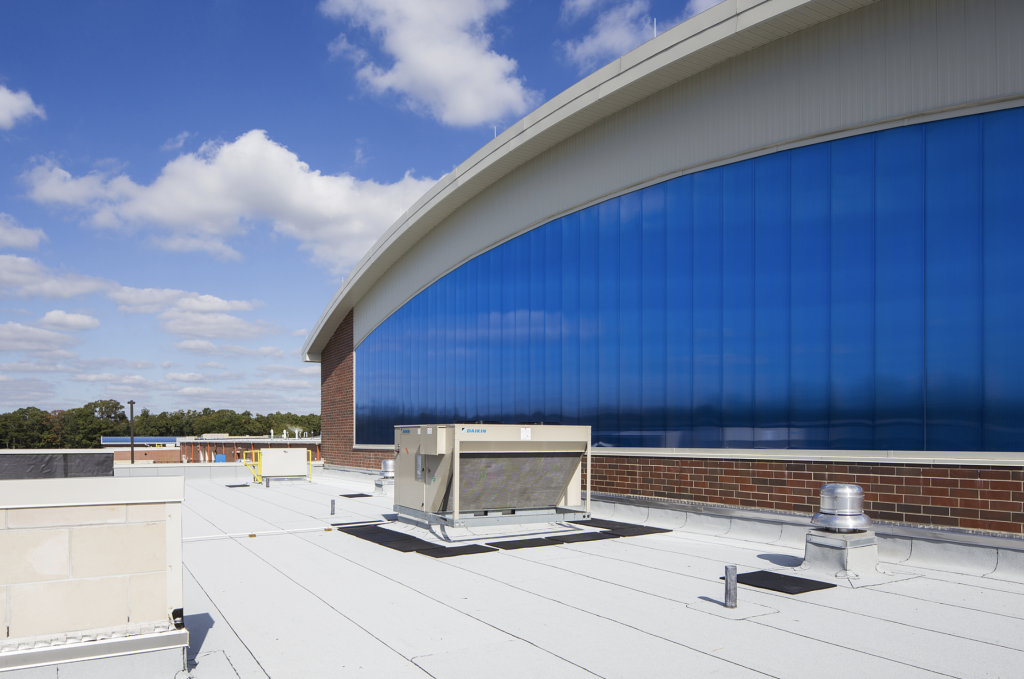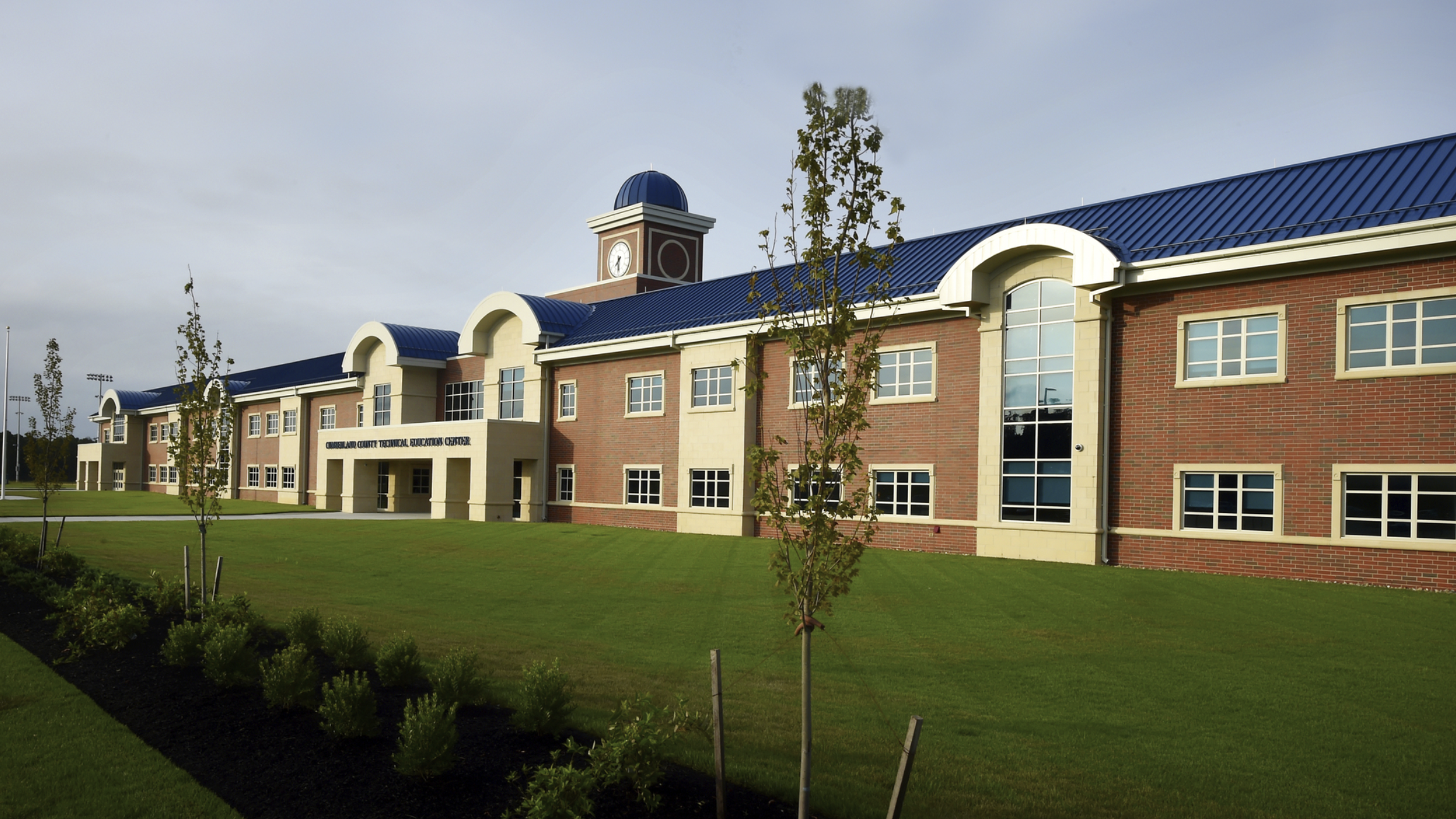
The original vocational school in New Jersey’s Cumberland County was located in an outlying area many miles from the high schools its students attended, creating transportation challenges for those enrolled. The vocational students would spend the first part of their day at a traditional high school before being transported by bus to the vocational school to participate in specialty courses such as carpentry, electrical, culinary arts and cosmetology, among others. In neighboring Gloucester County, a new model was established that allowed students to fulfill their core curriculum standards at the vocational school while also participating in the specialty courses.
The success of the new model convinced administrators at Cumberland County Technical Education Center (CCTEC) in Vineland, New Jersey, that it was an idea worth exploring. “That new model has really gained traction in New Jersey,” says Bob Garrison, president of Garrison Architects. “Let’s fulfill the core curriculum standards like English, math and science and stop wasting time busing the kids.”
The location chosen for the new school was in a more developed area of the county next to the local community college, increasing accessibility to students. Garrison Architects, who has extensive experience in the New Jersey K-12 and vocational school market, was retained to design the new school. The design team included the architectural firm, school administrators, a representative from the materials manufacturer and members from the state’s department of education.
Design Challenges
The demands of a vocational school and all the equipment required for the various specialty courses provided some design challenges. The shops, located at the back of the school, require a story and a half ceiling height, which differs from the rest of the building. The exhaust fans and other rooftop equipment required for those shops also complicated the design. The original proposed design of a low-sloped roof with parapet wall construction didn’t satisfy the aesthetic goals of school administrators, so they asked the design team to explore the use of a pitched roof. But as Garrison explains, “A pitched roof didn’t work with the width of the building.”

It was ultimately decided that a low-slope modified bitumen roof with metal mansards around the perimeter would achieve both the performance and aesthetic requirements. Garrison worked with The Garland Company, Inc. for the materials as well as help with details, drawings and project inspections. “We needed a company that could provide a high-quality warranted low-sloping system as well as the complementary metal system under one manufacturer,” Garrison says. “That way, the systems are married and it’s warrantable.”
Garland’s StressPly E FR Mineral eco-friendly modified bitumen membrane was installed as the cap sheet on the low-slope sections of the roof. The roof seams were heat welded, providing a seamless appearance across the 187,000-square-foot roof. The metal mansards along the sides and front of the building provide the illusion from the ground that the roof is sloped while also concealing some of the equipment on top of the building. Garland’s R-Mer Span 24-gauge patriot blue steel panels were installed on those mansards. The same panels, some with slopes as steep as 8:12, were used to custom-build the dome atop the clock tower at the main entrance, which serves as a centerpiece of the roof. The metal panels used over the barrel roofs on the gymnasium and cafeteria are continuous, eliminating all possibility of field leaks and contributing to the design the mansards promote.
Just two years after enrolling its first class of students, CCTEC has already developed plans for an expansion that will help accommodate the school’s demand for students focused on a health care path. The proposed 55,000-square-foot, $25 million building will connect directly to the main building via a hallway extension and will accommodate up to 200 students.
About the author: Bill Pancoast has more than 35 years of experience in the commercial roofing industry, providing long-term watertight solutions to a wide range of customers. He is highly knowledgeable in all aspects of the industry, providing his customers with invaluable technical support. He is a territory manager at The Garland Company, Inc.
TEAM
Architect: Garrison Architects, Bellmawr, New Jersey, http://garrisonarch.com
Roofing Contractor: Patriot Roofing Inc., Jobstown, New Jersey, www.patriotroof.com
MATERIALS
Metal Roof System: R-Mer Span, The Garland Company, Inc., www.garlandco.com
Modified Bitumen System: StressPly E FR Mineral, The Garland Company, Inc.




Be the first to comment on "Design Combines Modified and Metal Roofs to Achieve Performance and Aesthetic Goals"